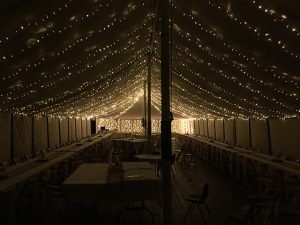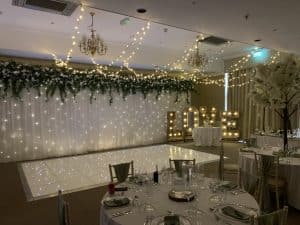Special occasions often hinge on creating just the right atmosphere. Whether you are planning a lively Christmas gathering at a hotel or hosting an intimate event, lighting plays a crucial role in shaping the mood and perception of guests. It’s not merely about brightening a space; the science of light delves deeper into how illumination can affect emotions, behaviour, and the overall experience. Here, we’ll explore how strategic lighting can transform your event into an unforgettable experience and subtly relate these concepts to the art of event lighting provided by companies like Wedding Venue Lighting.
Understanding the Impact of Lighting
Lighting’s influence extends beyond visibility, deeply affecting psychological and physical responses. Research shows that different lighting colours and intensities can provoke varied emotional responses. Warm lighting often makes spaces feel cosy and welcoming, ideal for events aimed at fostering connection. Conversely, cooler lighting tends to be perceived as more sterile but can impart a sense of calm and focus, which might be suitable for more formal settings.
If you’ve ever attended a hotel-hosted Christmas party, you may have noticed how lighting adds layers to the environment. Twinkling fairy lights and soft uplighting can evoke festive cheer and warmth, encouraging guests to relax and enjoy themselves.
Colour Temperature: Setting the Scene
Colour temperature, measured in Kelvin (K), significantly influences mood. Lower temperatures (around 2700K) produce a warm, yellowish glow that evokes intimacy—perfect for dance floors and dining areas where you want guests to feel comfortable and engaged. Higher temperatures (5000K and above) yield a bluish-white light reminiscent of daylight. This can be effective in areas where energy and alertness are required, such as during lively party games or performances.
Choosing the right colour temperature is essential, particularly in multi-purpose hotel venues where transitions in mood might be necessary throughout the event. Integrating adjustable options allows for seamless shifts that maintain guests’ engagement and immersion.
Light Intensity: Balancing the Ambience
Beyond colour, the intensity of light affects mood and behaviour. Bright lighting is often linked to increased energy levels, while low lighting encourages relaxation and comfort. At a Christmas party, striking a balance is vital. Ideally, brighter lighting should be used in the reception and bar areas to denote activity and social interactions. More subdued lighting works well for dining and lounging areas, where guests are likely to engage in quieter, more intimate conversations.
Dimmer switches or automated lighting systems can offer the flexibility needed to modify light intensity throughout various stages of an event. This adaptability allows event planners to tailor the atmosphere as the evening progresses, matching lighting with the dynamic flow of activities.
Colour Psychology in Event Lighting
An exciting area within the science of lighting is colour psychology. Each hue can elicit distinct feelings and behaviours, which event planners can harness to their advantage. For instance:
- Red: Often associated with excitement and passion, red lighting can boost adrenaline and is suited to areas designated for dancing or high-energy interaction.
- Blue: Known for its calming effect, blue lights are great for sections where relaxation and tranquillity are the focus.
- Green: Symbolising nature and balance, green hues foster a refreshing and harmonious atmosphere, ideal for areas around the dinner tables.
- Yellow: The happy hue, yellow light, evokes optimism and cheer, aligning well with spaces meant for games and lively conversations.
Leveraging these insights, event planners can craft environments that resonate with guests visually and emotionally. Professional services, akin to Wedding Venue Lighting, can guide you in matching lighting design with the psychological impact you wish to achieve at your event.
Lighting and Space Perception
The way lighting interacts with space can alter how a venue is perceived. For example, a well-lit room appears larger and more spacious, while darker lighting can create an intimate, cosy vibe. In a bustling hotel environment, these effects can significantly enhance the guest experience.
Highlighting architectural features with strategic uplighting can add depth and interest, drawing attention to particular areas and enhancing the overall design. This technique can be paired with personalised lighting solutions for a more tailored approach, ensuring hotel events stand out and remain memorable.
Synchronisation with Themes and Decor
A cohesive event theme is central to an outstanding guest experience. Proper lighting design ties in with the decor, reinforcing the event’s theme and tone. For instance, a winter-themed event can incorporate cool, bluish hues to mimic ice and snow, enhancing the festive spirit. Romantic notions might be underscored with soft, pink lighting to complement elegant floral arrangements.
Final Thoughts on Lighting at Events
Event lighting is more than a backdrop; it’s a powerful tool for influencing mood and perception. By carefully selecting lighting options that align with the emotional and behavioural objectives of your event, you can profoundly impact how guests experience the occasion.
As specialists in creating bespoke lighting environments, companies like Wedding Venue Lighting provide invaluable expertise in delivering these effects through tailored solutions. Understanding the science of light and the psychology behind it equips event planners with the ability to masterfully orchestrate ambience, ensuring events are both impactful and cherished.








